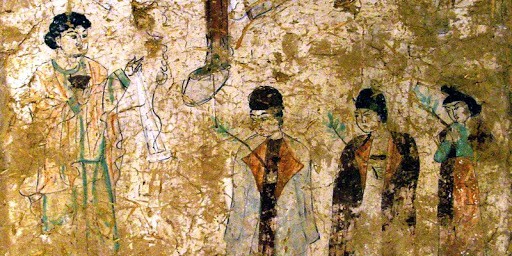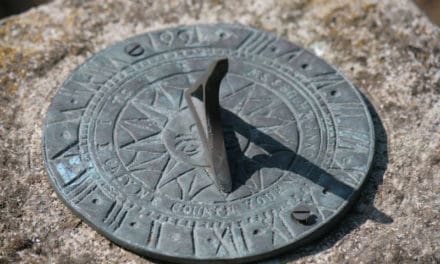This episode is titled “Meanwhile, Back in the East” because before we dive into the next phase of church history in Europe, we need to catch up on what’s happening to the East.
The Mongol Empire of the 13th and 14th Cs occupied the largest contiguous land empire in history. Rising originally from the steppes of Central Asia and stretching from Eastern Europe to the Sea of Japan; from Siberia in the north to Southeast Asia, the Indian subcontinent, the Iranian plateau, and the Middle East. At its greatest extent it spanned 6000 miles and covered about 16% of the planet’s total land area.
Genghis Khan was a shamanist, but recognizing the need to unite the Mongol clans. He adopted a policy of religious toleration that remained official policy during his reign and that of his son Ogedai. Several of the tribes that formed the core of the Mongol horde were Christians in at least a cultural sense. The Keriats, Onguds and Uighurs owed the Christianization of their culture to the Eastern expansion of Christianity we’ve looked at in earlier episodes.
It’s important to insert a short parenthetical comment here. Knowing what devastation the Mongols wrought during the 13th and 14th Cs and the literal wagon-loads of blood they spilled, we have to be careful when we call these tribes Christian. They certainly weren’t evangelical missionaries. Their faith was a highly-distorted Nestorian version of the Gospel that exercised little restraint on the barbaric rapaciousness that marked their conquests. Still, they called themselves ‘’Christians and their claimed allegiance to the Gospel had a huge impact on what happened in the Middle East.
Genghis Khan’s son Tolui, married a Christian woman from the Keriat tribe. One of their sons was the Mongol ruler Hulegu. Another was the famous Kublai Khan, founder of the Yaun Dynasty in China. While Hulegu seems to have identified as a Christian, Kublai certainly favored Christians in his court. When Hulegu conquered Baghdad, the Islamic capital of the day, his Christian wife urged him to destroy the city’s mosques but protect the churches. Her goal was to dismantle Islam in the region and hand it a permanent setback.
The Mongols took control of the Caliph’s palace and gave it to Baghdad’s Christian patriarch. It ended up being made into a grand church. With such obvious favor being shown Christians, many Mongols converted.
Asian Christians who’d suffered under the tyranny and oppression of Islamic rule for generations began to look to the advancing Mongol army as deliverers. One writer lauded the genocidal Hulegu and his wife as great luminaries and zealous combatants for the Christian religion. Beleaguered Western Crusaders were stoked by reports of allies in the East doing noble battle with the Muslims. Some Crusaders even sent emissaries to try to link up with the Mongols and help them in their conquest of the Egyptian Mamelukes in 1260. The Mameluke victory at Ain Jalut over the Mongols was a major disappointment.
Hulegu’s son married a Byzantine princess and he favored Christianity over both Buddhism and Islam. Over the next few decades the Mongols didn’t persecute Muslims but they did impose what the Muslims felt was a heavy burden. They were no longer able to treat Christians living among them as a subject people they could extract heavy tolls and fines from. The Mongol attitude was that as long as everyone paid their taxes, they were free to practice whatever religion they wanted. So a huge source of wealth to Muslims was lost.
Christians all across the Middle East took advantage of their newfound freedom and hoped things would stay that way indefinitely under a sympathetic Mongol rule. With Hulegu and his heirs in power, Christians began doing things that had been forbidden under Islam; like carrying the cross in public processions, drinking wine, and building churches where none had been permitted.
Then, in 1268 in Baghdad, I aks you to pay close attention to. Maybe this will bring a little light to why there’s such tremendous hatred on the part of certain elements within Islam towards Christians today; especially in that region of the world. The Christian Catholicos, the title of the archbishop, ordered a man drowned for converting from Christianity to Islam. Muslims were scandalized and rioted. Following Mongol policy, the rioting was brutally crushed. Christians took this as further evidence they were now the favored faith. But that favor was soon to turn against them.
The Mongol leaders became increasingly aware that Islam, with its embrace of jihad in the extension of the Faith by the power of the sword, was much more compatible with their values than either Christianity or Buddhism. They began to drift towards Islam until 1295, when the new Khan, Mahmoud Gazahn, persecuted Christianity and Buddhism. His successors followed his policies. During the early years of the 14th C, Christians found themselves under the control of a Muslim super-state. Their position radically change from what they’d known under the Arab caliphate. Now Christians were subject to intense persecution. In the regional capital of Al-Malek in 1338, all Christians in the city were killed. The few traces of faith among the Keriats and Uighurs didn’t last much into the 15th C.
Islam’s victory among the Mongols proved devastating for the remaining Christians of Central Asia and the Middle East. These communities had managed to weather the storm of the Muslim Arab conquest of the 7th C and it settled down to an uneasy peace with their new neighbors. But the brief respite brought by the Mongol invasion allowed the Christians to emerge in a dominant role for a time that they used to inflict the Muslims with real hurt. When a few years later, Muslims were back in control, this time with the authority of a Mongol Muslim powerhouse à Well, they decided it was payback-time. It was the Christians in Egypt who first bore the brunt of this new intolerance.
From the start of the 13th C, Egypt was the main target of Western Crusades. Frustrated Egyptian governments regularly retaliated for the Crusades by attacking the Copts, the native Egyptian church. In the mid-13th C, Egypt was ruled by the Mamelukes and with the loss of Baghdad to the Mongols, the center of gravity of the Muslim world shifted to Mameluke Egypt. They considered the Christians in their region as a 5th column, in cahoots with the Mongols pressing west toward Egypt. After the loss of Baghdad, it wasn’t hard to imagine a world in which Egypt would stand alone as the last great Muslim power in a Middle East dominated by Christian-Mongols.
The greatest Mameluke leader was General Baibar, the Scourge of both Crusaders and Mongols. Baibar hated Christians in general, but had an extra dose of loathing for those of the European variety. When he captured Antioch in 1268, he wrote the city’s Crusader ruler, who’d barely escaped, “Had you stayed, you’d have seen the crosses in your churches smashed, the pages of a false testament scattered, the patriarchs’ tombs overturned. You would have seen your Muslim enemy trampling over the places where you celebrated Mass, cutting the throats of monks, priests, and deacons upon your altars–bringing sudden death to the patriarchs and slavery to your royal princes.”
This attitude was radically different from the tone of earlier Muslim-Christian affairs. It reflected Baibar’s fury at the Christian alliance with the Mongols who themselves were utterly brutal in their conquests. This intolerance was increasingly evident in Egyptian policies toward their still substantial Christian minority. Persecution in Egypt wasn’t new, but things deteriorated quickly after the Mameluke-Mongol wars.
Between 1293 and 1354, the Egyptian government launched four campaigns to enforce the submission of Christians and Jews and drive them to accept Islam. Each wave of violence became more intense and better organized. A review of this half-century gives us a much better understanding of the ancient hostilities that have inflamed the Middle East ever since.
A quick sketch of what happened.
In 1293, an initial persecution fizzled when the sultan’s officials realized the Christians they were about to execute controlled the country’s finances and were the most competent scribes.
In 1301, a vizier visiting from Morocco was appalled at the wealth and status of Egyptian Christians and Jews. In Morocco, they had to pay a steep fine if they refused to convert and were subject to all kinds of public indignities. But in Egypt they held high public office, wore rich clothes and rode the best mounts. The vizier’s criticisms moved Egyptian officials to install the same rules as Morocco. A wave of repressive laws followed, and ordinances closed all the churches and synagogues outside of Cairo. Some ancient churches were demolished, relics burned. Non-Muslims were dismissed from public employment and were forced to wear distinctive clothing; blue turbans for Christians, yellow for Jews. They were forced to ride only on donkeys and whenever a Muslim approached, they had to dismount and bow. Visitors to Egypt said that the enforcement of these rules continued all the way into the 19th C.
The effects of this crisis linger to the present day, since the rigorous Muslim legalism that emerged at that time shaped modern Islamic fundamentalist movements. From the 1290s, Muslim jurists produced ever harsher interpretations of the laws governing minorities, particularly through the work of militant puritanical scholars like Ibn Taymiyyah. His life was shaped by the disasters of the Mongol wars which forced him into exile in Egypt. He saw his goal as the militant restoration of Islam in the face of its enemies at home and abroad. His work has had a long afterlife. Ibn Taymiyyah is regarded as the spiritual godfather of the Wahhabi movement and of most modern extremist and jihadist groups. Among many others, Osama bin Laden cited him as a special hero.
The Muslim hostility toward Christianity in the early 14th C was reflected in outbreaks of extreme anti-Christian violence. In 1321, Muslim mobs looted and destroyed Cairo’s Coptic churches. Usually, a Muslim cleric would give the signal for the attacks by mobilizing crowds in the mosques under the cry of “Down with the churches.”
Now, the sultan tried to keep order, but the hatred of Christians was too powerful to contain. They were blamed for setting fires across Cairo. When some of the accused confessed under torture, the authorities were forced to support the popular movement. At one point, the Sultan faced a mob of 20,000 calling for the forceful suppression of Christians. In order to safeguard his rule, the Sultan permitted purge. The government went further and announced that anyone who found a Christian was permitted to beat him and take his goods.
By the mid-14th C, Muslim writers had a whole catalog of anti-Christian charges that bear a close resemblance to the libelous anti-Jewish tracks – The Protocols of the Elders of Zion. Christians were accused of being spies, ever on the lookout for opportunities to betray the Muslim cause. Cases in both Egypt and Syria proved, and I’m using air-quotes around that word “proved”– they were serial arsonists. Some were even reported to have planted a bomb in the Great Mosque of Medina.
Given modern-day stereotypes of Islam in the West, it’s ironic that Christian minorities were then so feared because they allegedly plotted terror attacks against prestigious symbols of Muslim power.
In a society founded on honor and family pride, the humiliations of these new policies were too much to bear for many wealthy urban Christians who then converted to Islam. Other, poorer Christians proved firmer; particularly if they were located in rural areas where government policies were slower to penetrate. But later waves of intimidation wore down there resistance. Violence in the 1320s reduced Christian numbers and prepared the way for the disasters of 1354. From the end of the 14th C, Egypt’s Coptic Christians were reduced to a minority they retain up to the present day. The Coptic Church entered a period of hibernation that lasted until the mid-19th C. This is sad when we consider that Egypt had been a major center of Christianity for hundreds of years, and the place of dozens of vital and prolific monasteries. What were once the thousand monks of Bufanda, were reduced to just two.
Once their Mongol rulers converted to Islam, conditions became equally difficult for the Christians of Mesopotamia and Syria. Between 1290 and 1330, the story of Christianity in these parts, like that in Egypt, becomes a long list of disasters and ever harsher laws. One edict commanded that churches be demolished and services halted. All clergy and Christian leaders were to be executed. The storied churches of Tabriz, Arbella, Mosul, and Baghdad were torn down. Bishops and priests were tortured and imprisoned. Some laws struck directly at ordinary believers rather than just the institutions and hierarchy. Some of these edicts came from the Khans themselves while others came from the initiation of local governors. But the effects were just as damaging. Even when the Khans tried to limit persecution, they could hardly stem the zeal of local officers. In some cities, local laws ordered forcible conversion to Islam and prohibited the exercise of Christianity upon the pain of death. One Muslim ruler in Armenia passed ruinous taxes and ordered that anyone who refused to convert to Islam should be branded, blinded in one eye, and castrated. Christians and Jews were to be instantly recognizable by wearing distinctive clothing. In the words of one contemporary, “The persecutions and disgrace and markings and ignominy which the Christian suffered at this time, especially in Baghdad, well the words cannot describe.” The persecution reached its height with wholesale massacres at Arbella in 1310 and at Amita in 1317. There at Amita, where 12,000 were sold into slavery, the destruction of churches and monasteries was so thorough the fires burned for a month. These persecutions had a greater effect on the churches of the Middle East than any other event since the conversion of the Roman Empire. The succession of church leadership that had remained unbroken since the time of the Apostles came to an abrupt end. Whole Christian communities were annihilated across Central Asia and surviving communities shrank to tiny fractions of their former size. Christianity disappeared in Persia and across southern and central Iraq the patriarchs of Babylon now literally headed for the hills, taking up residence on the safer soil of northern Mesopotamia.








Thank you for this interesting discussion. It connects some dots that are not covered in the discussions of Eastern Orthodox history that I have come across so far. You have church presented a wide sweep, rather than a localized history, so a wider perspective comes out.
I also appreciated the earlier discusion on the Church of the East. Again, most Orthodox histories concentrate on the within the Empire, so the spread of the gospel outside the empire (and outside the orbit of the Ecumenical Councils) seems to have been ignored.